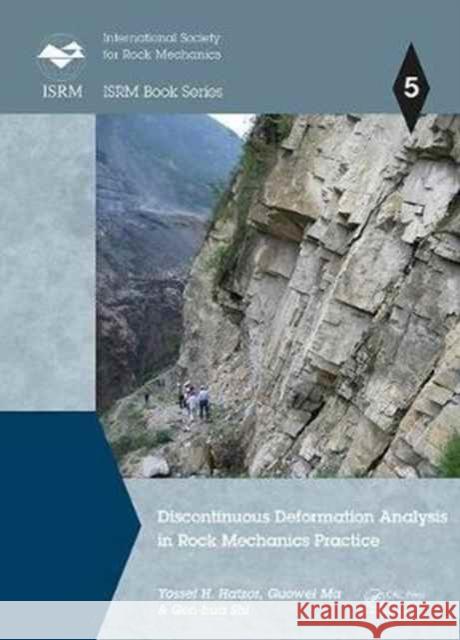Discontinuous Deformation Analysis in Rock Mechanics Practice » książka
Discontinuous Deformation Analysis in Rock Mechanics Practice
ISBN-13: 9781138027688 / Angielski / Twarda / 2017 / 390 str.
Discontinuous Deformation Analysis in Rock Mechanics Practice
ISBN-13: 9781138027688 / Angielski / Twarda / 2017 / 390 str.
(netto: 766,51 VAT: 5%)
Najniższa cena z 30 dni: 755,61
ok. 22 dni roboczych
Dostawa w 2026 r.
Darmowa dostawa!
The numerical, discrete element, Discontinuous Deformation Analysis (DDA) method was developed by Dr. Gen-hua Shi while he was working at the University of California, Berkeley, under the supervision of Prof. Richard E. Goodman in the late 1980s. Two-dimensional DDA was published in 1993 and three-dimensional DDA in 2001. Since its publication DDA has been verified, validated and applied in numerous studies worldwide and is now considered a powerful and robust method to address both static and dynamic engineering problems in discontinuous rock masses. In this book Yossef H. Hatzor and Guowei Ma, the two co-chairs of the International Society for Rock Mechanics (ISRM) Commission on DDA, join Dr. Shi in authoring a monograph that presents the state of the art in DDA research. A comprehensive discussion of DDA development since its publication is provided in Chapter 1, followed by concise reviews of 2D and 3D DDA in chapters 2 and 3. Procedures to select geological and numerical input parameters for DDA are discussed in Chapter 4 and DDA validation and verification is presented in Chapter 5. Applications of DDA in underground and rock slope engineering projects are discussed in chapters 6 and 7. In Chapter 8 the novel contact theory recently developed by Dr. Shi is published in its complete form, for the first time. The book is written for engineering geologists and civil engineers who are involved in projects in discontinuous rock masses where the dynamic deformation of block systems is of interest, for scientists interested in discrete element methods, and for numerical code developers. Engineering practitioners will find more interest in the introduction and chapters 4, 6, and 7. Theoreticians will find chapters 2, 3, and 8 useful for gaining deeper understanding of DDA theory. Code developers will find Chapter 5 useful for checking their codes against the bench mark tests and the analytical solutions presented there. This book is published within the framework of the ISRM Book Series and is the contribution of the ISRM DDA Commission to the international rock mechanics community.











